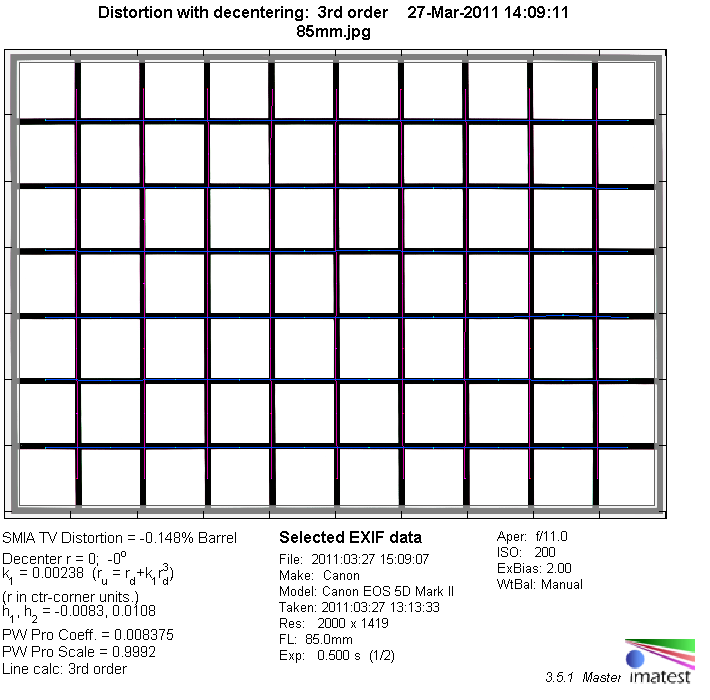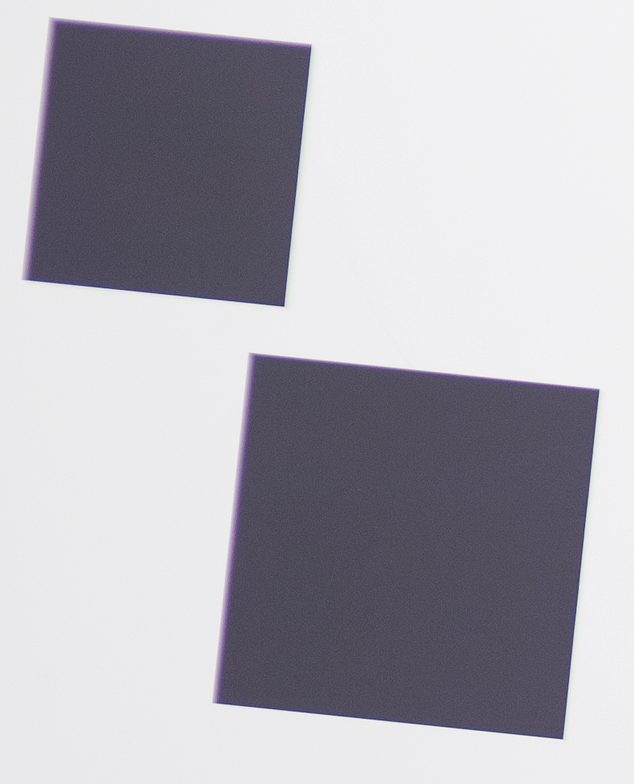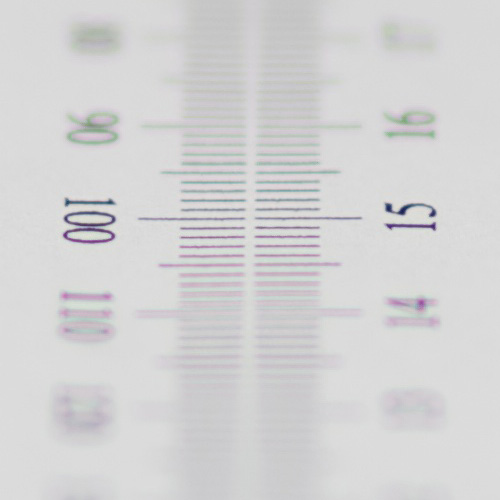|
Sigma AF 85mm f/1.4 EX DG HSM (EOS) - Review / Lab Test - Analysis |
|
Lens Reviews -
Canon EOS (Full Format)
|
|
Page 2 of 2

Distortion
The Sigma produces an absolutely negligible degree of barrel distortion on full format cameras.

Vignetting
Typical for ultra-large aperture lenses there's quite a bit of vignetting at max. aperture. You will notice this (~1.7EV) in field images. The situation eases at f/2 but you will need to stop down to f/2.8 till the problem is really resolved.

MTF (resolution)
The Sigma produced fairly typical resolution figures for such a lens. The lens is very sharp in the image center at f/1.4 but the borders/corners are rather soft in the full format scope. However, the level of contrast is very high and e.g. better than what we've seen from the Zeiss ZE 85mm f/1.4. The quality increases gradually when stopping down. The center is starting to show excellent results at f/2 and it's downright outstanding from f/2.8 to f/8. However, the borders/corners remain unimpressive at f/2. You need to stop down to f/2.8 in order to get good results and very good results across the image frame are possible from f/4 onwards.
The field curvature is marginal and the overall centering quality of the tested sample was very good. In addition, the amount of focus shift when stopping down was very low.
Please note that the MTF results are not directly comparable across the different systems!
Below is a simplified summary of the formal findings. The chart shows line widths per picture height (LW/PH) which can be taken as a measure for sharpness.
If you want to know more about the MTF50 figures you may check out the corresponding Imatest Explanations
There is one issue that has prevented better corner/border results: the resolution figures suffer quite a bit due to rather pronounced coma at large apertures - very sharp contrast transitions towards the center, soft contrast transitions towards the outer image field. The shot below, a crop of our MTF test chart, illustrates the issue.

Chromatic Aberrations (CAs)
Lateral chromatic aberrations (color shadows at harsh contrast transitions) are generally very low with an average pixel width around 0.4px at the image borders. This is an excellent result in the full format scope.

Bokeh
The quality of the bokeh (out-of-focus blur) is a primary aspect for such a large aperture lens. The Sigma is capable of delivering very pleasing results here. Out-of-focus highlights have a very smooth inner zone and they remain circular till f/2.8. At f/4 you can spot some traces of the aperture shape. The highlight discs deteriorate to "cat's eyes" towards the image corners - this is rather normal though (a vignetting effect). The foreground blur is buttery and the background is also very smooth albeit a tad more nervous.

Longitudinal (Axial) Chromatic Aberrations (LoCA)
LoCAs (non-coinciding focal planes of the various colors), sometimes called "bokeh CAs", are a general problem in this lens class. As you can notice below the halos have different colors - magenta (red + blue) in front the focus point and green beyond. The Sigma struggles somewhat more than usual here. The color fringing is very pronounced at f/1.4 and f/2. The effect remains visible at f/4 and there are also traces left at f/5.6.
These shots also show the almost complete lack of focus shift when stopping down, as mentioned in the MTF section.
|
Move the mouse cursor over the f-stop marks below to observe the respective LoCAs
|
| f/1.4 |
f/2 |
f/2.8 |
f/4 |
f/5.6 |
|

|
Sample Images
You can find some sample images taken with the Nikon D3x in our Nikon FX review of the lens.
VerdictIt took Sigma quite a while but the Sigma AF 85mm f/1.4 EX DG HSM is finally here - their first ultra-large aperture tele prime lens. It was about time to get some serious competition (with AF) for the Canon EF 85mm f/1.2 USM L II. The Sigma lens is capable of matching the performance of its Canon counterpart although it doesn't beat it. Unsurprisingly it follows the same optical characteristics. The image center is very sharp and contrasty straight from f/1.4 whereas the borders/corners are fairly soft due to coma effects. However, from a field perspective this is usually not a show-stopper - due to the shallow depth-of-field the main subject tends to be positioned close the center when choosing very large apertures so some border softness is rather irrelevant here. The image quality increases steadily till reaching its very good peak between f/5.6 and f/8. Lateral CAs are minimal and not field-relevant. Same goes for image distortions. The vignetting is, of course, visible at large apertures but it remains in line here with the rest of the gang. The quality of the bokeh is generally excellent except in very tricky situations. The amount of bokeh fringing (LoCAs) is on the high side though so you may spot some colored out-of-focus halos in critical situations.
The build quality of the lens is up to pro standards. The metal lens body is rubber-coated thus providing a good grip. The tightly assembled focus ring turns smoothly but it's a bit tricky to find the exact focus due to the very short focus path. On the other hand the same short focus is also responsible for fast auto-focusing so there's a certain trade-off here. We had no significant issues with focus accuracy on the tested sample. The Sigma AF 85mm f/1.4 EX DG HSM is quite expensive in absolute terms. However, even so it costs much less than the corresponding Canon lens (which is slightly faster though) and as such a highly interesting alternative.
| Optical Quality (Technical): |
 (just) (just) |
|
|
| Field Quality: |  (Shallow Depth-of-Field Photography) (Shallow Depth-of-Field Photography) |
| Mechanical Quality: |  |
| Price/Performance: |  |
| | |
| | What does this mean ? |
|